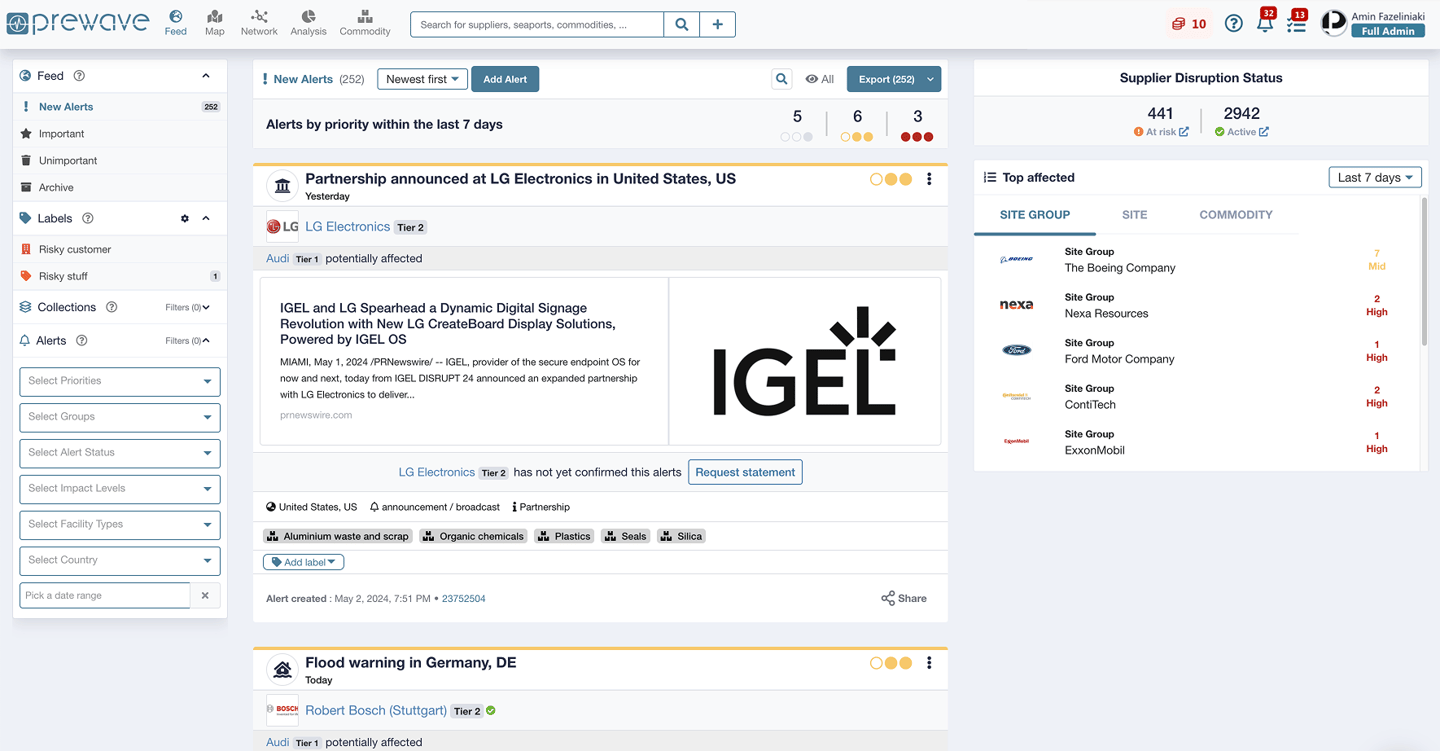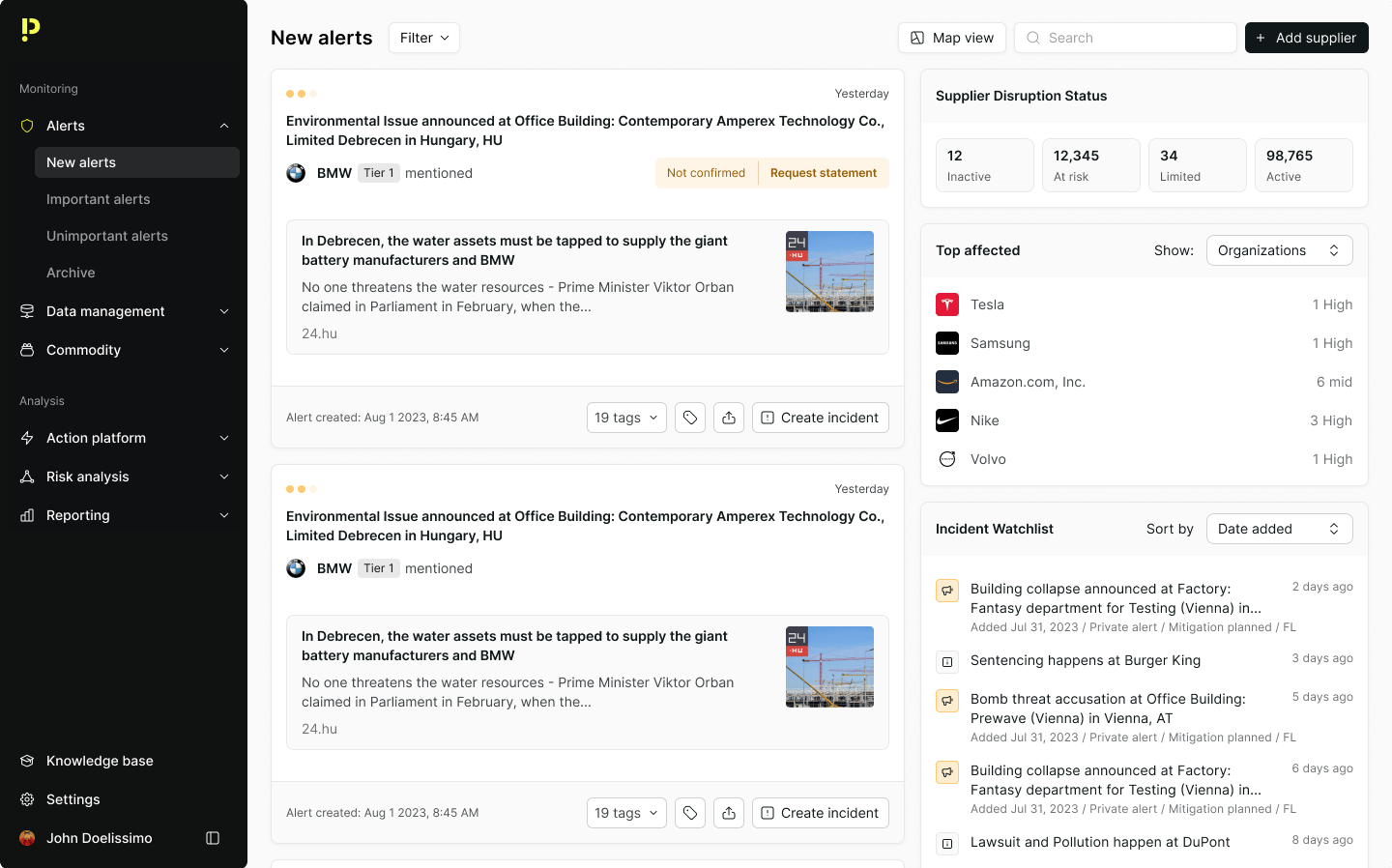Supply Chain Risk management B2B
Supplier monitoring for purchasing, supply chain and sustainability managers.
Prewave GmbH- Wien
Seed to 63 million Euro series-B funding Designer.
Directly influenced a churn-prevention of a €400K contract.
As First designer in the entire company embedded end-to-end user involvement into the product and development team culture.
Scaled-up the design team from one designer to a team of six in less than two years with complete involvement in recruitment process.
Created the entire design system from scratch and was involve in development from choosing the base library (migrating from multiple used libraries to Prime-NG) and implementing storybook.
Managed influence across different scopes and created the need to involve design from the proof of concept (POC) stage of a project.
Initiating UX workshops, User interviews, human-centred thinking in the product management team.
Created a collaborative workflow for the design team for improving transparency and contributing task within design team.
Initiated user interviews for the first time within the company and involving users in design process.
Convinced stakeholders to redesign 100% of the interface.
Establishing a Design Processes in Jira
When I joined, there was no structured design workflow in place. I introduced a dedicated design board in Jira, allowing product managers to submit design requests as tickets. This not only improved transparency and prioritization as the team grew, but also made our work trackable — proving over time that design was directly contributing to product value and delivery. The process enabled cross-team visibility and laid the foundation for a scalable design practice.
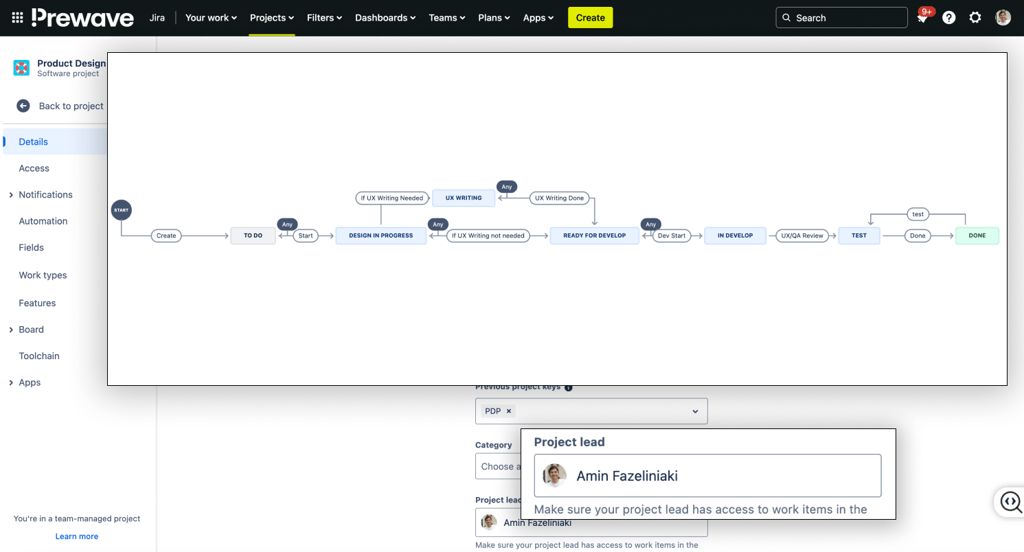

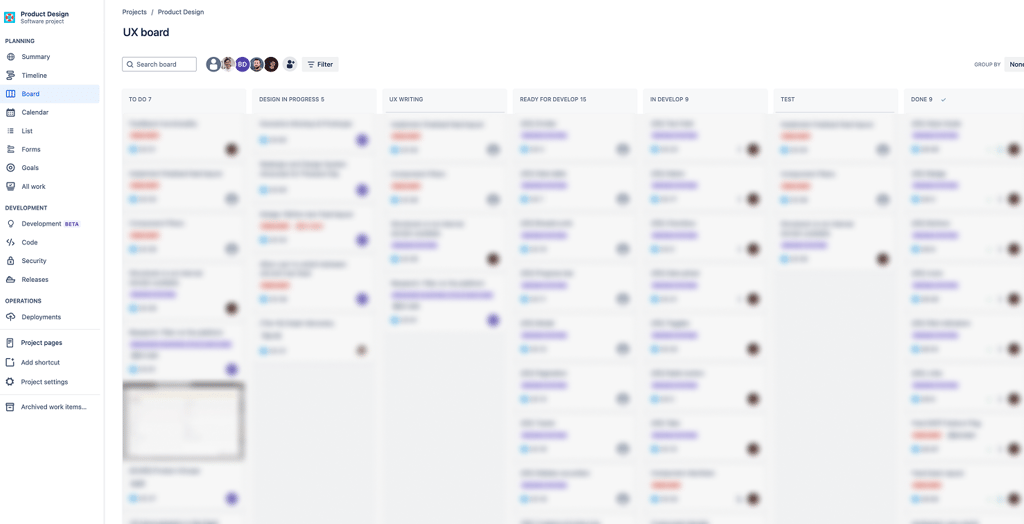

Creating design workflow base on ours plus developers and PMs
When team grew this board became our core tool to connect everything
Laying the Foundation: Our First Design System
At first one of my top priorities was to establish consistency across the product. I created our initial design system and style guide from scratch — including a shared component library to unify UI patterns and accelerate development. This early investment helped ensure scalable, consistent, and developer-friendly design across all future features and platforms.
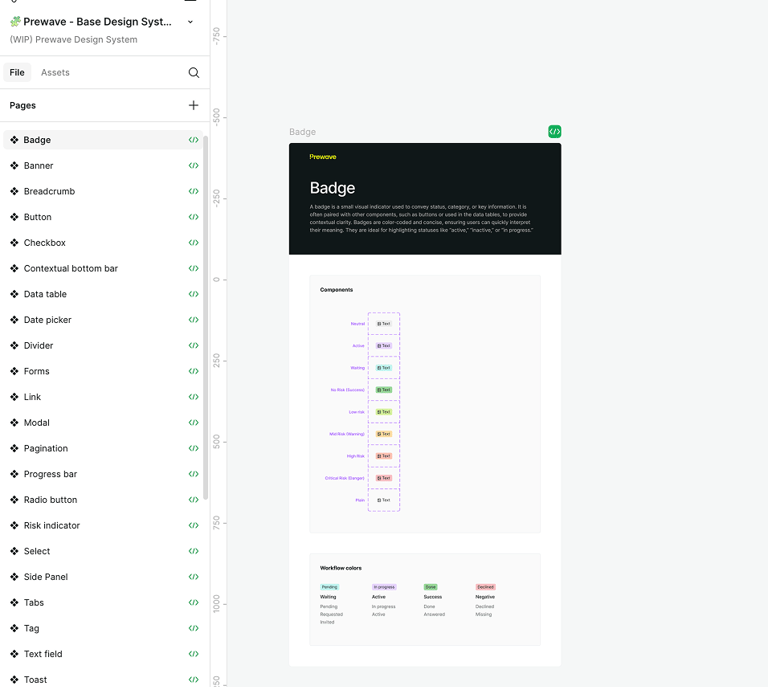

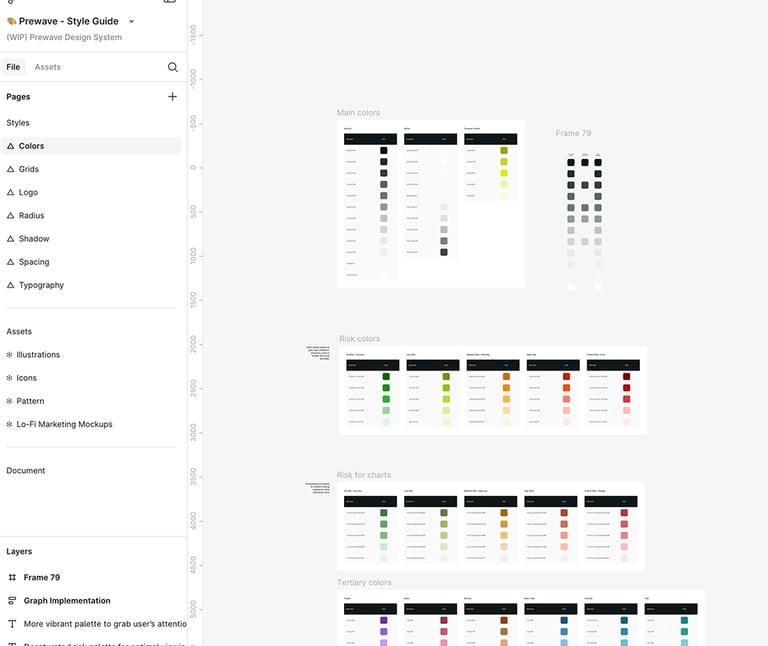

Design system
Style guide
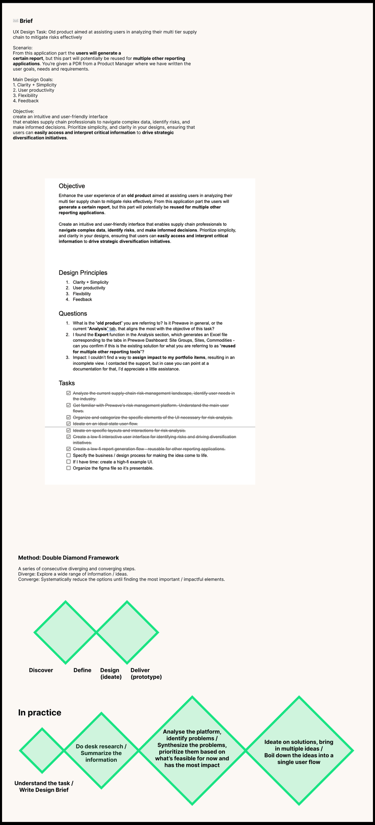

One Feature, One Flow: My Design Process in Action
As the first designer on the team, my main challenge was shifting the product from a sales-driven approach to a user-centric one. The product was already overloaded with features that had been added without any design thinking behind them. In many cases, users needed certain features but weren’t even aware they existed.
Gathering requirements, Desk research
The process started from gathering requirements(1) and desk research(2).
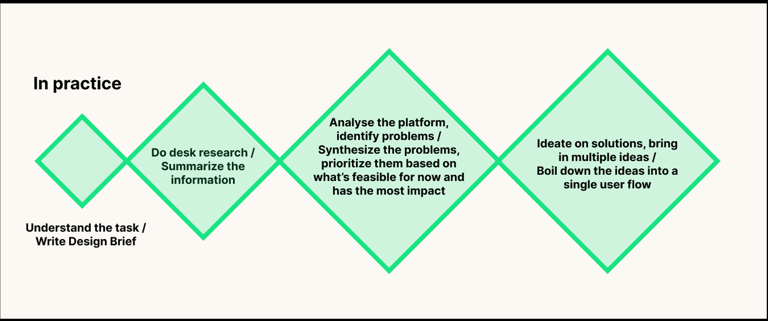

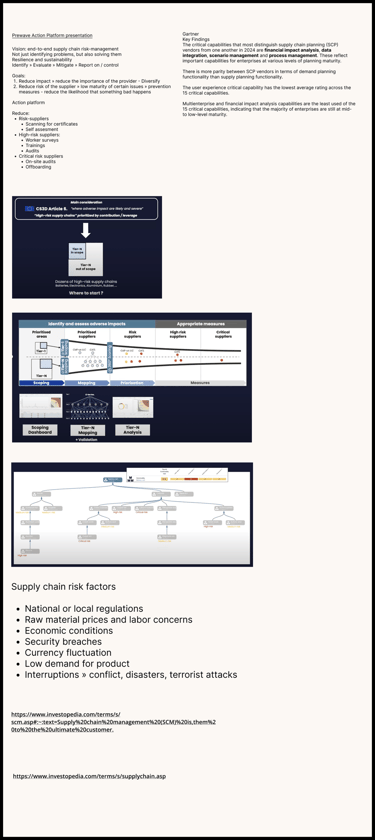

Double Diamond Framework in practice
Method in practice: Double Diamond Framework(1-1) a series of consecutive diverging and converging steps.
Diverge: Explore a wide range of information / ideas.
Converge: Systematically reduce the options until finding the most important / impactful elements.
Analyzing the platform
Then analysing the platform(3) and interview stakeholders, talk to CS and get in touch with end users to spot the problems.
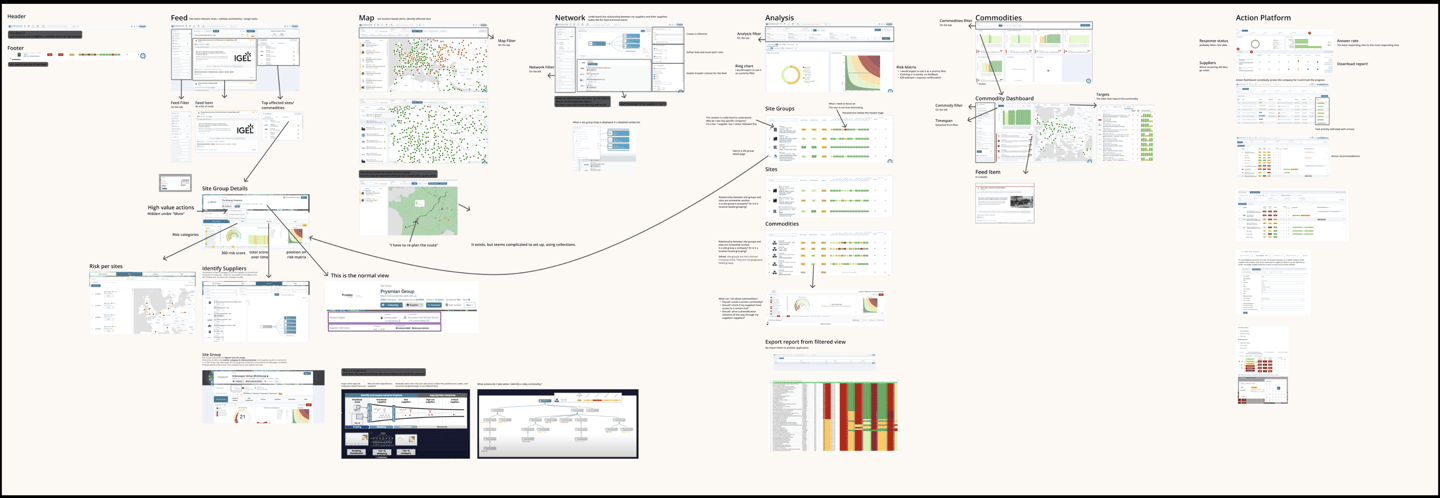

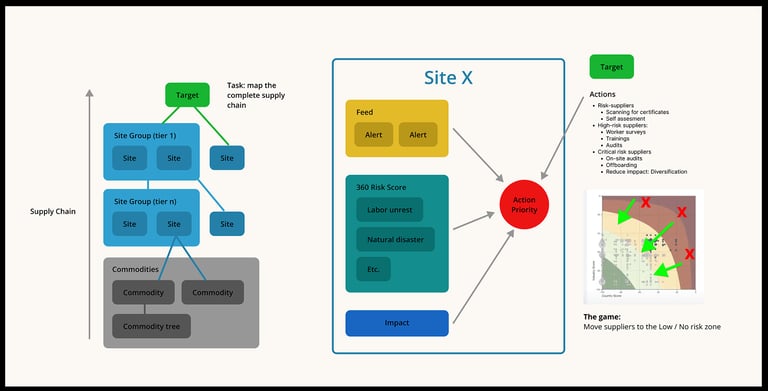

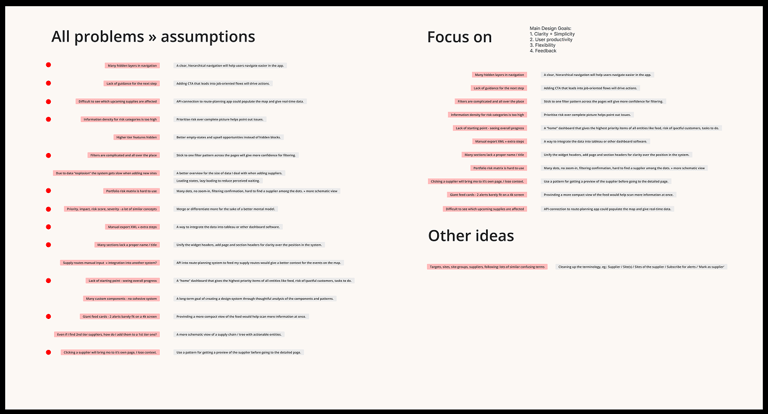

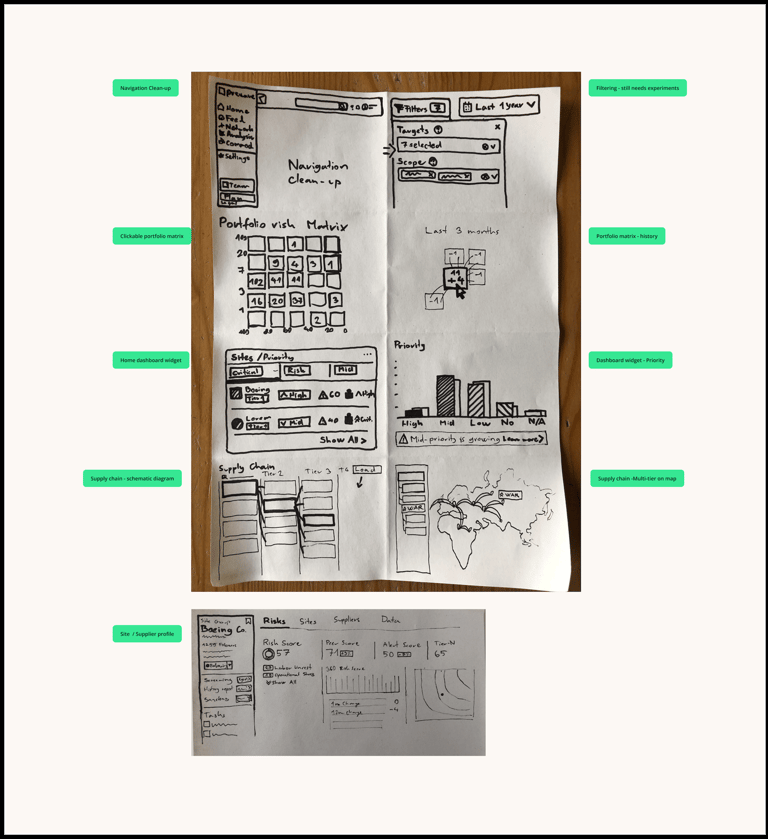


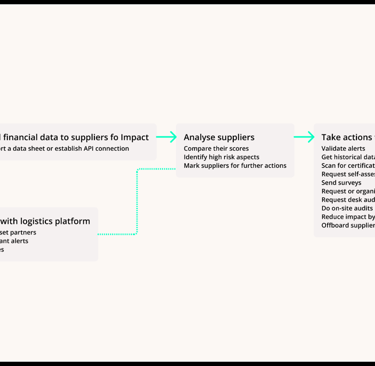

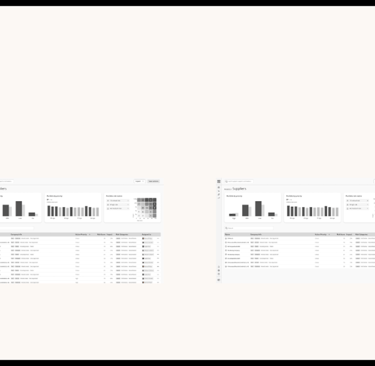
Conclusion
This project focused on driving continuous UX improvements within a fast-paced product environment. Key efforts included identifying usability issues through data and audits, setting measurable goals for new features, and fostering collaboration through concept prototypes and UX-driven initiatives like "UX Days." A significant emphasis was placed on establishing a scalable design system to ensure consistency, maintainability, and long-term usability across the product.
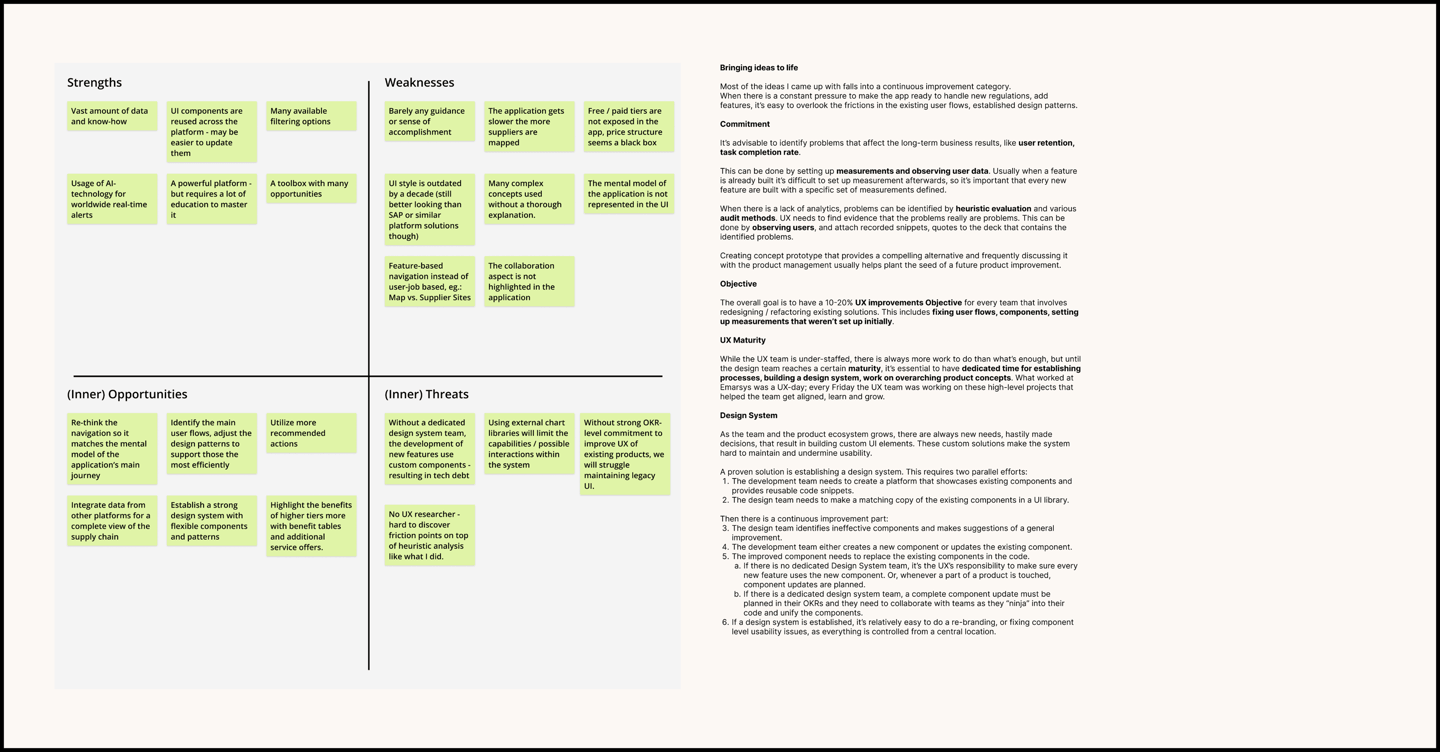

8.Prototype
7.Analyzing user flows for main actions from user
6.Ideation
4.Synthesis - Main entities and flows
5.Bullet pointing the problems and assumptions
3.Analyzing the platform
1-1.Double Diamond Framework in practice
1.Gathering requirements
2.Desk research
9.Result
Synthesis, problems/assumptions & Ideation
By mapping key supply chain actors and risk flows(4), I identified critical challenges in supplier management—this informed a structured list of problems and assumptions(5) that guided ideation and solution development throughout the design process.
Analyzing user flows for main actions from user
Building on the identified problems, we analyzed key user flows(7) to understand how users interact with the system, uncover friction points, and ensure the design supports efficient, intuitive actions aligned with their goals.
Prototype
With insights from user flows and defined problems, we created interactive prototypes(8) to explore solutions, test usability, and iterate quickly based on feedback and design hypotheses.


One Feature, One Flow: My Design Process in Action
As the first designer on the team, my main challenge was shifting the product from a sales-driven approach to a user-centric one. The product was already overloaded with features that had been added without any design thinking behind them. In many cases, users needed certain features but weren’t even aware they existed.
Gathering requirements, Desk research
The process started from gathering requirements(1) and desk research(2).




Double Diamond Framework in practice
Method in practice: Double Diamond Framework(1-1) a series of consecutive diverging and converging steps.
Diverge: Explore a wide range of information / ideas.
Converge: Systematically reduce the options until finding the most important / impactful elements.
Analyzing the platform
Then analysing the platform(3) and interview stakeholders, talk to CS and get in touch with end users to spot the problems.












Conclusion
This project focused on driving continuous UX improvements within a fast-paced product environment. Key efforts included identifying usability issues through data and audits, setting measurable goals for new features, and fostering collaboration through concept prototypes and UX-driven initiatives like "UX Days." A significant emphasis was placed on establishing a scalable design system to ensure consistency, maintainability, and long-term usability across the product.


8.Prototype
7.Analyzing user flows for main actions from user
6.Ideation
4.Synthesis - Main entities and flows
5.Bullet pointing the problems and assumptions
3.Analyzing the platform
1-1.Double Diamond Framework in practice
1.Gathering requirements
2.Desk research
9.Result
Synthesis, problems/assumptions & Ideation
By mapping key supply chain actors and risk flows(4), I identified critical challenges in supplier management—this informed a structured list of problems and assumptions(5) that guided ideation and solution development throughout the design process.
Analyzing user flows for main actions from user
Building on the identified problems, we analyzed key user flows(7) to understand how users interact with the system, uncover friction points, and ensure the design supports efficient, intuitive actions aligned with their goals.
Prototype
With insights from user flows and defined problems, we created interactive prototypes(8) to explore solutions, test usability, and iterate quickly based on feedback and design hypotheses.
